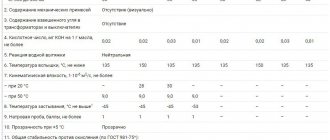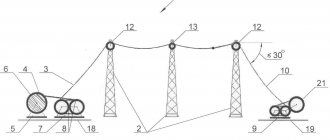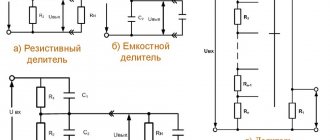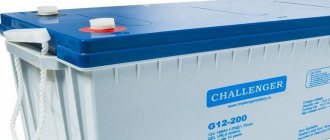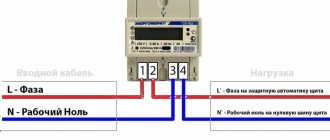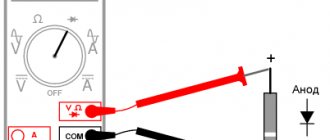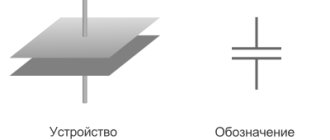Equipment types
In the operation of high-voltage equipment, reliable insulation between live parts of electrical installations and individual devices is very important. They must also be insulated from the ground. This role, as well as the fastening function of current-carrying parts, is performed by insulators of various types.
According to the most general classification, that is, from the point of view of the places of their application, they are divided into hardware, station, linear.
The first two types are used in substations, power plants, and current-carrying parts of electrical devices. They are used here as fastenings and insulate switchgear buses (switchgear). According to their functions and location, they can be walk-through or support.
More about insulators
Bushing insulators are used to insulate wires running through the walls of buildings. In addition, they carry out the removal of load switch conductors from tanks and switches. These are high-voltage porcelain insulators that have a cavity inside where a metal rod or group of busbars passes.
The so-called bushings are a type of bushing insulation designed for 110 kilovolts and higher voltages. At the bushings, the current conductor is a copper pipe. To make the internal insulation of high-voltage high-frequency bushings, in addition to porcelain, ceramics, bakelite, and other solid organics are used. Insulation can also be liquid or paper-oil.
The so-called “capacitor input” can be organized. This is when layers of special cable paper are placed on a conductive rod, and aluminum foil is laid in thin layers in the middle. Such a structure is necessary so that the potential is evenly distributed along the axis and radially. The capacitor input is usually sealed.
As for support insulators, they support buses, contact nodes of switchgears, and electrical devices. Such devices are either support-pin or support-rod. In the latter, the design is complemented by a porcelain rod with protruding ribs. They are also called wings, they protect from rain.
Overhead power lines
Now about linear insulators. They secure the wires of overhead lines. They also insulate the outdoor switchgear buses (open switchgear). There are pin and pendant insulators. The first ones received their name because of the peculiarities of their fastening - on metal pins, which are fixed in the traverses of the supporting elements. The devices hold the wires firmly on the supports. Such devices are found on power lines up to a kilovolt. Pin insulators of higher voltages, up to 35 kilovolts, are made as two-element ones.
The flexible connection between wires and supports of power lines with a voltage of 35 kilovolts or more is provided by suspension insulators. Some of them are combined into garlands (plate type). Rod insulators increase the electrical strength of lines, since their breakdown is impossible. The insulating part of the hanging fixtures is made of glass or porcelain. It is connected to the conductive rod and cap by a cement bond.
Special designs have been developed for line insulators. They allow their use in power lines in polluted atmospheres. Such devices have increased discharge rates and also increased creepage distance.
Types of insulators by purpose
In addition to dividing insulators by material of manufacture, there are types of insulators by purpose. These are the insulators:
- Pin;
- Hanging;
- Support;
- Passage;
- Rod.
Pin insulators (IS)
Using pin insulators, bare AC wires and insulated SIP-3 wires are attached to the support cross-arms.
Suspension insulators (PS, PSD, PSV)
These insulators are hung on the supports of overhead power lines for fastening wires and cables using the hanging method. Most often made from tempered glass.
Support insulators (IO, IOR, SA, ONShP)
These insulators are used in distribution installations and other electrical equipment to secure conductive elements. They operate in areas from 6 to 35 kV.
Bushings (IP, IPU)
If it is necessary to pass a wire or bus through a wall, for example, at the entrance to a substation, bushings are used.
Requirements for insulators
Any insulator must satisfy several technical requirements. First of all, a certain electrical strength. It is defined as that electric field strength, expressed in kilovolts per meter, at which the insulating material loses its dielectric properties.
Mechanical strength is also important. It is important to counteract the forces that appear during a short circuit in the circuit between live parts of the equipment.
The insulator must maintain its performance even in all weather conditions, be it snow, hail, or rain. Heat resistance is also an important factor. Temperature changes over a wide range should not affect the electrical properties of the insulator. In addition, it must have a discharge-resistant surface.
Why are insulators needed on power transmission towers?
The installation of a power supply network is a complex and dangerous technical task. Transmitting electricity over long distances requires large financial costs and special safety measures.
Do you know that to reduce energy losses, current is transmitted under very high voltage from 10 to 700 kV. This voltage requires reliable isolation from breakdown.
Insulators are used to safely transmit electricity through wires. The safe operation of power lines and the preservation of people’s lives and health largely depends on the quality of the materials of the supports, wires and especially insulating materials.
Classification of insulators
Insulators are divided according to several technical characteristics:
- What materials are they made of?
- According to design features.
The industry produces insulators made of glass, porcelain and polymer material. Until recently, insulators were mostly made of porcelain. However, recently they have been replaced by tempered glass insulators, which have better technical characteristics and are cheaper to produce.
Tempered glass insulators
It is important that glass insulators do not require routine testing under high voltage. Any damage to the insulator body can be detected visually. In this case, the destruction of one insulator in a garland does not lead to a breakdown of electricity. The production technology of glass insulators is fully automated.
If the defect manifests itself in the mechanical part and the garland breaks, then immediate repair of the suspension is required. All this applies to porcelain insulators, but it is much more difficult to see a defect and breakdown. A disadvantage of using glass insulators is their heavy weight and fragility.
The benefits include:
- Not a complicated visual troubleshooting.
- Low cost of automated production of insulators.
- Insulators from elektropostavka.ru do not change their technical characteristics during operation.
- They are not subject to deformation.
- Glass resists ultraviolet rays well.
- Non-flammable and non-hygroscopic.
- They have high dielectric characteristics.
Porcelain insulators
Porcelain insulators do not change their chemical and physical properties over the entire period of operation. Just like glass, they have excellent dielectric properties. They are no worse than glass ones, but are expensive to manufacture and maintain. Disadvantages are heavy weight and fragility.
Insulators made of polymer materials
Polymer insulators have lower characteristics and are used only in electrical networks with voltages up to 220 kV. Even with local damage to the bodies of polymer insulators, their dielectric characteristics are significantly reduced. Polymer materials tend to age, and at high temperatures their mechanical strength decreases.
Any insulators used on power lines have their own positive and negative properties.
Professional advice: use glass insulators. In the rating for the operation of insulators, they can be placed in first place in terms of efficiency, safety and low cost of production.
Electrophysical and mechanical indicators
These include the nominal value and the breakdown voltage. The latter determines the minimum voltage that causes breakdown of the insulator. The properties of the insulator are characterized by such indicators as discharge and withstand voltage. These parameters have different values if the surface is dry and if it is wet (insulator in the rain).
Thus, there are dry-discharge and wet-discharge values of this voltage, when there is an overlap over the surface while maintaining all the insulating qualities.
Important electrophysical characteristics are the values of 50% pulse discharge voltages of both polarities.
Mechanical indicators are, first of all, the smallest force (load) of destruction, expressed in newtons. It is assumed that it is applied to the insulator cap and directed in a direction perpendicular to its axis. Dimensions and weight also matter.
What are the components of different insulators made of?
The main material for station and equipment insulators was porcelain, which fully meets the above requirements. For casings located inside, as well as components of some types of insulators filled with insulating oil, bakelite, textolite or getinax are more often used.
The so-called “metal fixtures” are metal parts that are fixed to porcelain. It is used to attach the insulator to the base, and to connect current-carrying parts of electrical devices and busbars to the insulator. It is fixed with special cementitious lubricants that have a coefficient of thermal expansion similar to that of porcelain. The insulator body is coated with glaze, which improves its electrical properties.
Polymers or porcelain? Choosing an insulator
Porcelain rod insulators are one of the main elements of switching devices and other electrical equipment of switchgears, on the reliable operation of which the quality and uninterrupted supply of electricity, and often the life and health of operating personnel, depend.
The use of silicate porcelain for the manufacture of post-rod insulators (BSIs) has undermined the faith of Russian electrical energy producers in domestic porcelain insulators. More than 2 million units are in use in the Russian Federation. insulators of the IOS series of old types as part of disconnectors and busbar supports 110-500 kV.
In accordance with the “Technical requirements for ceramic support insulators for voltages over 1000 V with increased reliability for supplies to the electrical and nuclear power industry” developed by RAO UES of Russia, the creation of a new generation of modernized OSIs with increased operational reliability began.
The new “Technical Requirements” established:
- issuing technical specifications for newly developed or modernized products and agreeing them with consumers;
- the use of ceramic electrical material of subgroup 120 (high-alumina material) GOST 20419-83 instead of subgroup 110 (quartz porcelain);
- exclusion of the use of gray cast iron for the manufacture of insulator fittings;
- mandatory reliability testing of insulators.
A strong argument in favor of the trouble-free use of modernized OSI is the many years of experience in operating the IOS-110-1250 M UHL1 insulator, in the design of which, from the moment of its “birth,” high-strength cast iron was used in the manufacture of flanges and high-alumina material for the insulating part of the insulator. Throughout the entire production period of IOS-110-1250 M UHL there were no complaints from consumers regarding the quality of insulators.
JSC "ELIZ" was the first in Russia in 2001 to master the production of modernized insulators IOS-110-600 M UHL1, IOS-110-400 M UHL1 and conducted tests in well-known testing centers of Russia: NIIPT, Federal State Unitary Enterprise VEI named after. Lenin and VNIIE.
In subsequent years, in 2003, ELIZ OJSC mastered the IOS-110-1250 M UHL1 insulators, in 2005 - IOS-110-2000 M UHL1 and IOS-110-2000 M-01 UHL1 insulators and improved the design of the IOS-110-600 insulators M UHL1, IOS-110-400 M UHL1 in order to reduce the weight characteristics of insulators. The reduction in weight characteristics in comparison with previously developed insulators amounted to an average of 23%. The results of mechanical tests of lightweight construction insulators carried out during reliability tests were not inferior to the previously achieved results.
The transfer of insulators to reliable materials, both for the manufacture of the insulating part of the insulator and for the manufacture of the insulator fittings, has restored the faith of electricity producers, both in Russia and in neighboring countries, in the quality of new products.
All manufactured post-rod insulators are certified in the GOST R system, in the Energosert certification body and, at the request of consumers, in EnSERTICO.
Currently, the production and use of polymer insulators is rapidly expanding in Russia. The number of enterprises producing polymer insulators is several times higher than that of porcelain insulator manufacturers. It's no secret that the production of polymer insulators does not require huge investments and premises, as in the production of porcelain insulators. The production of polymer insulators can be mastered in a small workshop, while the production of porcelain insulators requires a factory.
The apparent simplicity of manufacturing polymer insulators attracts many entrepreneurs. However, technological requirements are not always met during the production process, which leads to insulator failures in operation.
Quite a wide experience in operating non-ceramic insulators of the first generation (1970-1985) was generally not very favorable: track and erosion of the protective shell, brittle fracture of the fiberglass rod and other damage were observed. This led in many cases to both insulator overlapping and severe accidents, including wires falling to the ground.
As a result of the damage and accidents that occurred, many manufacturers stopped producing non-ceramic insulators, and other companies took the path of improving both the insulator design and their manufacturing technology. Considering the shortcomings in the design of insulators and the manufacture of insulators using the technology of “shashlik” design of the ribs of the protective shell, many manufacturers have mastered a new technology for manufacturing the protective shell of the insulator - one-piece molding in one cycle.
The operating experience of second generation linear polymer insulators is still very limited and does not allow us to draw a conclusion about the reliability of such insulators.
For different manufacturers, the manufacturing technology and formulation of organosilicon compositions are not completely identical, which makes the choice of insulators for use extremely difficult. Insulators from different manufacturers with the same initial electrical and mechanical characteristics may become unequal in operational reliability after several years of aging under operating conditions.
The term “organosilicon rubber” includes a wide range of materials with different properties due to the use of various fillers and additives used in the manufacture of material for the protective shell of insulators. In this regard, classifying a polymer insulator as “organosilicon” is not yet sufficient to guarantee its reliable operation in operation, which is confirmed by international experience in the operation of such insulators. The current regulatory documents for polymer insulators do not contain technical requirements for materials for the manufacture of insulator components, with the exception of fittings, in contrast to the regulatory documents for ceramic insulators.
Despite the relatively small number of failures, each of them involves the need to replace the insulator.
The largest number of failures is associated with “brittle fracture” of the rod and breakdown of insulators under the shell, as well as destruction of the rod from partial discharges. The main reasons that caused these failures are the penetration of moisture through the connection of the metal end with the insulating part, the penetration of moisture through the shell and overheating of the rod during casting of the shell, which caused cracking of the fiberglass. Finding the location of the line damage and carrying out restoration work takes a lot of time.
There is still no consensus on the service life of polymer insulators and the long-term reliability of the materials used in their production. These issues require further study, both in laboratory conditions and in real operating conditions.
The uninterrupted supply of electricity to consumers largely depends on both the quality of the insulators used and the correctness of their choice (type and quantity). If insufficient quality insulators are used (for example, due to economic considerations), concerns about maintaining the required reliability of overhead lines are shifted to operating organizations (MES, JSC-energo, etc.).
When choosing insulators for overhead lines, it is better to focus on the most reliable types of insulators that meet the “set it and forget it” principle, that is, they require a minimum amount of preventive measures and diagnostics.
So far, power engineers are wary of the massive use of polymer insulators on lines with voltages of 220 kV and above. And there is reason for their fears. For example, cases of breakage of terminations that occurred on lines with voltages above 110 kV, on lines of 35-110 kV the terminations do not come off, but only burn.
The volume of polymer insulators installed at electric power facilities makes up about 10% of the total number of insulators used in Russia.
At the same time, there is a remarkable trend in the world when potential consumers on voltage lines refuse to use polymer insulators as not reliable enough, based either on their own experience or on the experience of their colleagues.
Polymer insulators, like porcelain insulators, have a number of disadvantages.
At the same time, ceramic insulators still have more positive signs. Below are the main distinguishing features of porcelain and polymer insulators. Comparative table of properties of porcelain and polymer insulators
| Porcelain | Polymers |
| Material characteristics | |
| A product of inorganic chemistry, chemical reactions ended at a temperature of 1300º C, therefore, over time, the physical and chemical properties of the material remain unchanged | A product of organic chemistry, the chemical process does not stop until the polymers completely decompose into monomers, the physical and chemical properties are continuously changing |
| Mechanical strength remains unchanged throughout the entire service life | Mechanical strength decreases at elevated temperatures and due to polymer aging |
| Solar radiation and ultraviolet radiation do not affect the insulator material | Solar radiation and ultraviolet radiation increases the rate of polymer aging |
| Full resistance to all chemically aggressive emissions from industrial enterprises (with the exception of hydrofluoric acid) | Not resistant to emissions from almost all metallurgical and chemical industries |
| Water permeability is zero (according to GOST 26093 magenta test under pressure - zero painting) | The material is water-permeable when depressurized (according to GOST R 52082, resistance to water penetration without pressure is no more than 15 minutes per 10 mm of material, i.e. an insulator with a height of 1000 mm should be painted no faster than in 25 hours) |
| Non-flammable material | Fire hazardous material |
| Mechanical properties | |
| Has no deformation at the moment of application of bending force | The amount of deflection at the moment of application of bending force is normalized by the specifications for insulators and can be different for different insulators. This circumstance seriously complicates the possibility of their use in disconnectors of voltage class 220 kV and higher. Operating experience has already noted that even when minor damage occurs to polymer insulators, the electrical characteristics of the insulators are disrupted, after which the accelerated stage of aging of the polymer insulators begins. |
| The term “permanent deformation” does not exist | The residual deformation that occurred during the test according to the previous paragraph should disappear in no more than 5 minutes. (GOST R 52082) |
| Mechanical strength is practically independent of the operating temperature of the insulator | Mechanical strength decreases at elevated temperatures and due to aging of polymer materials |
| Electrical properties | |
| Surface electrical discharges do not affect the insulator material | Discharges lead to the appearance of tracks on the surface of the insulator and, as a result, to erosion |
| The electrical properties of the insulator remain unchanged | Electrical strength invariably decreases due to aging of polymer materials |
| Breakdown of the insulator is impossible due to the high dielectric properties of porcelain | When the insulator is depressurized, breakdown is possible both along the inner surface of the insulator pipe and along the air gap of the pipe cavity |
| Performance properties | |
| Large mass | Low weight |
| Fragility, possibility of damage to insulators by foreign objects, including during transportation of insulators | Relatively higher resistance to acts of vandalism, but the protective shell may be damaged by sharp objects during operation, packaging and transportation. Care must be taken to prevent damage to the containment during installation. |
| High reliability of the insulator is ensured by the stability of the technological process. Making an insulator using homemade methods is impossible. There are reliable and reliable methods for monitoring insulators during manufacturing and operation | The simple technological process and the availability of materials contribute to the emergence of small manufacturing companies that do not always ensure the required compliance with the insulator manufacturing technology. Expensive diagnostics that do not always reveal hidden defects in insulators. |
| The use of hot-dip galvanizing technology and thermal diffusion coating ensures the service life of the ends and fittings during the service life of the insulators. Output and incoming quality control of zinc coating has been established | On the ends of some insulators, despite the presence of a zinc coating, traces of rust appear after 5-10 years. The reason is the low quality of protective coatings. Today, many manufacturers of polymer insulators apply zinc coating not by hot method, but by galvanic method. Inspection of zinc coatings on the ends of insulators dismantled from high-voltage lines showed that in many cases the thickness and uniformity of the coating very often does not meet the necessary requirements |
The lack of experience in operating polymer insulators over a fairly long production period (more than 40 years) does not speak in their favor: the results of operating polymer insulators are not widely publicized.
Chepkasov M. V. Vyshegorodtseva G. D. www.eliz.ru
Classification by location
External installation gives the corresponding insulating devices a greater surface development. It corresponds to a higher microdischarge voltage, which allows insulators of this type of installation to work just as reliably in rain or in a dirty state. This is their main difference from indoor insulators.
By the height of the porcelain part, insulators designed for different voltage ratings can be distinguished from each other. The gradation in the magnitude of mechanical forces for destruction is expressed in changes in diameters.
It happens that one part of the insulator is in open space, while the other is located indoors or in oil. This is exactly the case of the previously described bushings. Often such devices (for example, insulators of transformers, oil circuit breakers) are asymmetrical. It is interesting that the part of the porcelain body that is exposed to air has more developed ribs.
What is an insulator?
“Isolator” is a polysemantic word denoting a means for isolating, delimiting, or separating something from the general environment. We will consider its electrical aspect, that is, as a product for insulating elements of power equipment, and in an even narrower sense - as a dielectric device for attaching a conductor to the supporting structure of a power line.
Please note that the insulator can be polymer, ceramic or glass and simultaneously performs 2 functions: safety and mounting devices, but in any case it is made of material that does not allow electrical current to pass through. The support insulator can be used to secure not only a wire, but also a cable or busbar.
The most common is the insulator made of porcelain. Most often it is white, although dark colors are also allowed. It gained popularity for its ability to withstand high mechanical compressive pressure, in addition, it has a good dielectric coefficient. By the way, in former times it was also used for laying external wiring in premises. The disadvantages of such samples include their fragility and massiveness, so they are not very easy to maintain.
Glass is also resistant to shock, but has a more reasonable cost, weighs less, is simple and cheap to maintain, due to which it is gradually replacing the first one.
As for products made from polymers, they are so far used only inside buildings (for example, in switchgears and transformer substations). Apart from secondary medium-voltage lines, there is practically no equipment outdoors due to technological limitations. The fact is that plastic insulators, under the influence of unfavorable external factors, wear out relatively quickly and become unusable.
The design features of insulators are dictated by the methods of their installation on the support and the methods of attaching cable and conductor products to them. They are made in the form of ribbed rods or plates. The ribs are not provided by chance: they are necessary so that the discharge is located at an angle to the direction of the electric force field.
